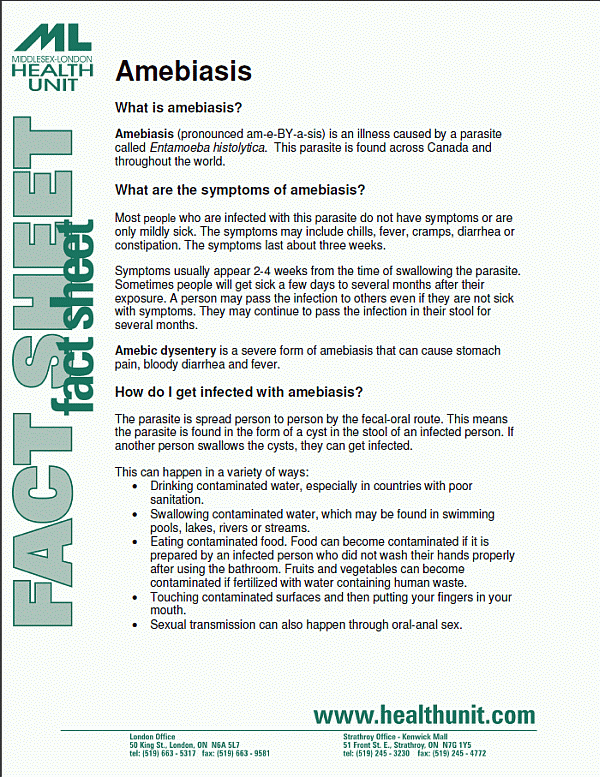Contact Us
For more information, please contact the Infectious Disease Control Team:
- 519-663-5317 Ext. 2330
 Amebiasis Fact Sheet (PDF 76KB)
Amebiasis Fact Sheet (PDF 76KB)For more information, please contact the Infectious Disease Control Team:
Most people who are infected with this parasite do not have symptoms or are only mildly sick. The symptoms may include chills, fever, cramps, diarrhea or constipation. The symptoms last about three weeks.
Symptoms usually appear 2-4 weeks from the time of swallowing the parasite. Sometimes people will get sick a few days to several months after their exposure. A person may pass the infection to others even if they are not sick with symptoms. They may continue to pass the infection in their stool for several months.
Amebic dysentery is a severe form of amebiasis that can cause stomach pain, bloody diarrhea and fever.
The parasite is spread person to person by the fecal-oral route. This means the parasite is found in the form of a cyst in the stool of an infected person. If another person swallows the cysts, they can get infected.
This can happen in a variety of ways:
Anyone can get amebiasis, but it is more common in people who live in or travel to countries with poor sanitary conditions. It is usually found in young adults. Children under the age of five rarely get this infection. About 1 in 10 of the world's population is infected with this parasite.
There are prescription drugs available to treat amebiasis. See your doctor if you think you may have this infection. It is diagnosed with a stool test.
Washing hands often and well is the best prevention.
If you are sick with diarrhea, see your doctor and avoid handling or preparing food for others.